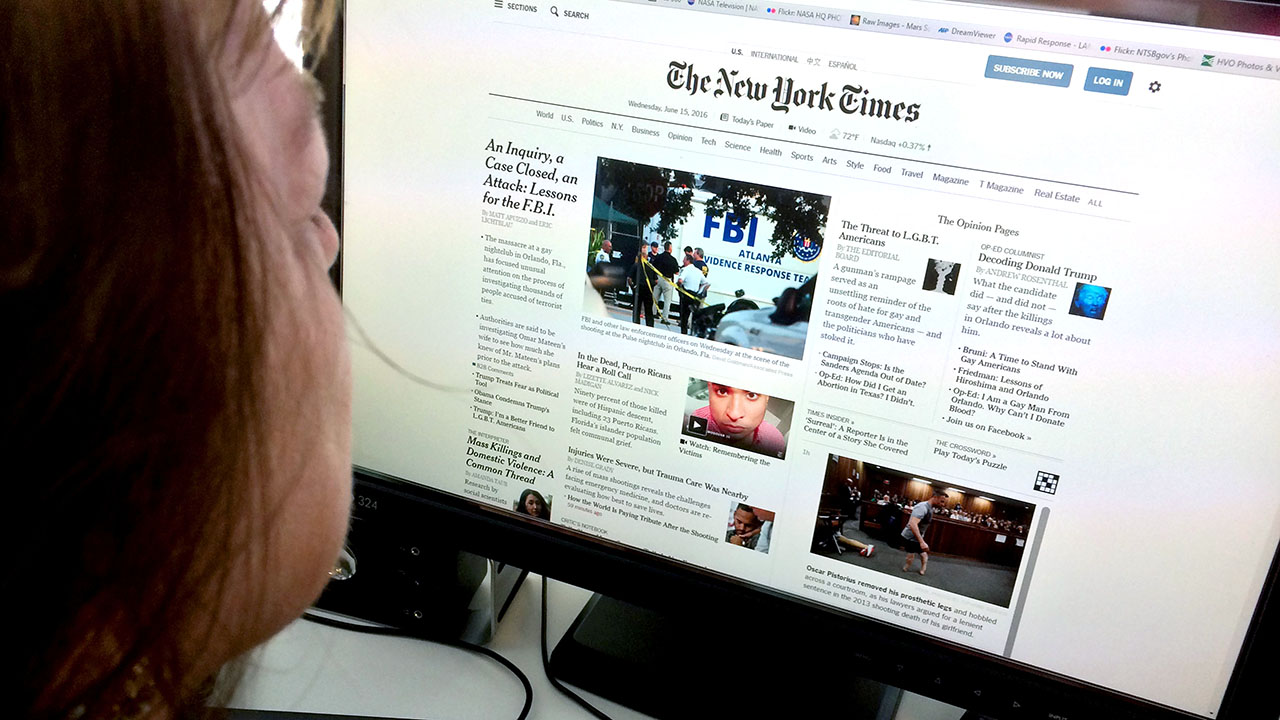The Development of Journalism in the Age of Information Online
In the swiftly changing landscape of journalism, the digital age has actually ushered in a brand-new era where the immediacy of on the internet information improves both its creation and usage. The surge of citizen journalists and independent voices additionally makes complex the narrative, contributing to a lively yet perilous media ecosystem.

Surge of Digital News Operatings Systems
The rise of electronic information platforms has actually essentially transformed the landscape of journalism, noting a change from traditional print media to vibrant, on the internet rooms. This evolution was driven by developments in innovation and the boosting accessibility of the internet, which allowed news to be disseminated rapidly and generally. Unlike their print equivalents, digital systems can promptly update content, supplying real-time information coverage and analysis that charms to the contemporary viewers's need for immediacy and relevance.
Digital platforms have additionally widened the scope of journalism, allowing a diversity of viewpoints and voices. With lower barriers to entry, independent journalists and smaller wire service can reach worldwide audiences, testing the monopoly when held by established media corporations. This democratization of information has actually enhanced the general public discussion, using differed stories and accommodating specific niche rate of interests that were previously underserved.
Additionally, the combination of multimedia aspects such as video, audio, and interactive graphics enhances storytelling, making information extra accessible and engaging (dw news). This multimedia come close to not just draws in a wider audience but also help in the comprehension of complex tales. Essentially, electronic platforms have redefined journalism, cultivating technology and flexibility in an ever-evolving media atmosphere

Influence of Social Media Site
Social media systems have actually additionally transformed journalism by altering just how information is taken in and shared. Additionally, social media has increased target markets, giving journalists accessibility to worldwide viewership beyond geographical constraints.

The interactive nature of social media sites promotes engagement, allowing target markets to take part in discussions, share point of views, and add to news stories. This interaction boosts the vibrant between reporters and their audiences, advertising a much more participatory kind of journalism. Nevertheless, this also positions immense stress on journalists to generate content that reverberates with audiences, usually prioritizing sensationalism to capture interest.
Additionally, social media systems have become crucial devices for reporters to resource stories, gauge public viewpoint, and network with market peers. The dependence on social media additionally demands a crucial assessment of resources to make sure the reputation of information shared.
Challenges of Misinformation
Amidst the digital transformation of journalism, one considerable difficulty is the pervasive spread of misinformation. In an age where info is quickly easily accessible and plentiful, comparing qualified information and made web content has actually ended up being progressively challenging. The sheer volume of details shared throughout different online platforms usually obscures the line in between fact and fiction, posing a significant hazard to the honesty of journalism.
False information can spread rapidly via social networks, where algorithms prioritize involvement over precision, inadvertently amplifying incorrect narratives (dw news). This not only threatens public count on media organizations but additionally promotes an environment where deceitful material can influence public point of view and decision-making procedures. The challenge for reporters is twofold: to expose falsehoods successfully and to support strenuous requirements of fact-checking and verification
Additional complicating this issue is the visibility of deepfakes and advanced disinformation projects that take advantage of advanced innovations to create deceptive content equivalent from legitimate coverage. As these technologies progress, so must the devices and techniques utilized by journalists to fight them. Addressing false information calls for partnership in between media organizations, innovation firms, and policymakers to develop detailed strategies that secure the credibility of information in the digital age.
Duty of Citizen Journalists
Browsing the landscape of false information highlights the transformative impact of resident reporters within the electronic realm. As standard media electrical outlets grapple with the sheer rate and quantity of information dissemination online, resident reporters-- average individuals armed with mobile phones and accessibility to social media sites-- are playing an increasingly critical function. These grassroots factors have actually come to be critical in covering events quickly, typically supplying real-time updates from the ground prior to mainstream media can respond.
Person reporters have democratized information coverage, intensifying voices that could or else remain unheard. By leveraging platforms like Twitter, Facebook, and Instagram, they provide diverse point of views that challenge the narratives frequently pushed by established media. This democratization, however, also presents challenges. The absence of formal training or editorial oversight can lead to the spread of unverified information, making complex initiatives to identify reality from fiction.
However, person journalism is reshaping the media landscape, compelling traditional electrical outlets to adjust by integrating user-generated content right into their coverage. By promoting community involvement and motivating participatory journalism, these digital storytellers add to a much more dynamic and comprehensive information ecological community. As resident journalists proceed to progress, their role fit public discussion remains an essential part of contemporary journalism.

Future of Journalistic Integrity
The proliferation of electronic platforms has actually equalized information circulation, allowing a larger array of voices to add to the news landscape. This has actually also led to the spread of false information and why not try here the erosion of depend on in media.
The rise of fabricated knowledge and algorithm-driven content curation additionally complicates the landscape. While AI can boost reporting by assessing large datasets and recognizing patterns, it also presents risks of predisposition and manipulation. Reporters must as a result stay attentive, guaranteeing that modern Check This Out technology acts as a device for fact as opposed to distortion.
Moreover, the economic stress on conventional media electrical outlets require ingenious business versions to sustain quality journalism. Subscription-based versions, nonprofit financing, and collaborations with tech firms are emerging as possible options. Yet, they should be sought without jeopardizing content self-reliance.
Ultimately, the future of journalistic honesty depends on the dedication of journalists and media organizations to promote transparency, liability, and a steadfast devotion to truth, among a rapidly transforming digital world.
Verdict
The development of journalism in the electronic age presents both opportunities and challenges. The increase of electronic news systems and social networks has democratized info dissemination, empowering a diverse range of voices, including person journalists. Nonetheless, these improvements require watchful initiatives to combat misinformation and maintain journalistic honesty. The future of journalism hinges on the capability to adjust cutting-edge company designs that maintain top quality coverage while maintaining the reputation and trust vital for notified public discussion.
The rise of digital news platforms has fundamentally transformed the landscape of journalism, marking a Extra resources change from traditional print media to vibrant, on-line rooms. With reduced obstacles to access, independent reporters and smaller news organizations can reach global target markets, testing the syndicate when held by established media corporations.Social media platforms have better changed journalism by modifying just how information is taken in and shared. As conventional media outlets grapple with the large rate and volume of news dissemination online, person reporters-- common individuals armed with smart devices and accessibility to social media-- are playing a progressively critical role. The surge of digital news systems and social media has actually democratized details circulation, equipping a varied selection of voices, consisting of citizen reporters.